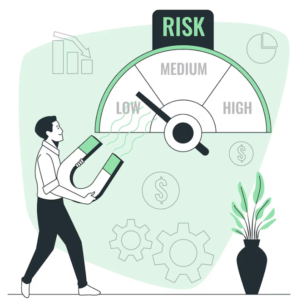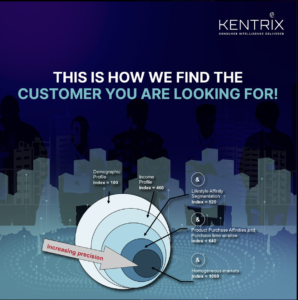In today’s dynamic business landscape, Customer Risk Management (CRM) is an essential process that companies must undertake to ensure sustainable growth and safeguard their operations. By effectively identifying, assessing, and mitigating potential risks associated with customers, businesses can enhance their resilience and secure their long-term success. This comprehensive guide delves into the intricacies of CRM, providing actionable insights and strategies for its successful implementation.

Understanding Customer Risk Management
Customer Risk Management involves systematically identifying and mitigating risks posed by customers. These risks can stem from various factors, including financial instability, fraudulent activities, non-compliance with regulatory requirements, and reputational damage. Effective CRM ensures that businesses can maintain a healthy customer portfolio while minimizing potential threats.
Key Components of Customer Risk Management
1. Customer Due Diligence (CDD)
Customer Due Diligence is the foundation of CRM. It involves collecting and analyzing information about customers to assess their risk levels. Key steps include:
- Identification and Verification: Gather essential details such as the customer’s name, address, and identification documents to verify their identity.
- Risk Assessment: Evaluate the customer’s financial stability, business activities, and compliance with regulations to determine their risk profile.
- Ongoing Monitoring: Continuously monitor customer activities and transactions to detect any unusual or suspicious behavior.
2. Risk Categorization and Scoring
Categorizing and scoring customers based on their risk levels is crucial for prioritizing risk management efforts. Factors to consider include:
- Financial Health: Assess the customer’s financial statements, credit history, and payment behavior.
- Business Relationships: Evaluate the nature and extent of the customer’s business relationships and their potential impact on your company.
- Geographical Risk: Consider the risks associated with the customer’s location, including political stability, economic conditions, and regulatory environment.
3. Enhanced Due Diligence (EDD)
For high-risk customers, Enhanced Due Diligence is necessary. This involves a more in-depth investigation to gather additional information and mitigate risks. Steps include:
- Background Checks: Conduct thorough background checks on the customer, including their key executives and beneficial owners.
- Source of Funds: Verify the source of the customer’s funds to ensure they are legitimate and not linked to illegal activities.
- Onsite Visits: Perform onsite visits to the customer’s premises to gain a better understanding of their operations and risk factors.
Implementing a Customer Risk Management Framework
1. Establishing Policies and Procedures
Developing robust CRM policies and procedures is essential for ensuring consistency and effectiveness. Key elements include:
- Risk Appetite Statement: Define your company’s risk tolerance and acceptable levels of risk.
- Customer Acceptance Policy: Outline criteria for accepting or rejecting customers based on their risk profiles.
- Escalation Procedures: Establish protocols for escalating high-risk cases to senior management or specialized teams for further review.
2. Leveraging Technology and Data Analytics
Utilizing advanced technologies and data analytics can significantly enhance CRM efforts. Key tools include:
- Customer Relationship Management (CRM) Systems: Implement CRM systems to centralize customer data and streamline risk management processes.
- Data Analytics: Use data analytics to identify patterns, trends, and anomalies in customer behavior, enabling proactive risk mitigation.
- Artificial Intelligence (AI): Employ AI-powered tools to automate risk assessment and enhance decision-making.
3. Training and Awareness
Educating employees about CRM is critical for fostering a risk-aware culture. Key initiatives include:
- Training Programs: Conduct regular training sessions to ensure employees understand CRM policies, procedures, and best practices.
- Awareness Campaigns: Launch awareness campaigns to highlight the importance of CRM and the role of each employee in mitigating customer risks.
- Performance Metrics: Establish performance metrics to evaluate the effectiveness of CRM training and awareness initiatives.
Also Read: Top 10 Secrets to Understanding Purchase Behavior
Monitoring and Reviewing Customer Risk Management
1. Continuous Monitoring
Regularly monitoring customer activities and transactions is vital for detecting and addressing risks promptly. Strategies include:
- Automated Alerts: Set up automated alerts to notify relevant teams of unusual or suspicious customer behavior.
- Transaction Monitoring: Implement transaction monitoring systems to analyze customer transactions in real-time and identify potential risks.
- Periodic Reviews: Conduct periodic reviews of customer risk profiles to ensure they remain accurate and up-to-date.
2. Audits and Assessments
Regular audits and assessments help ensure the effectiveness of CRM processes and identify areas for improvement. Key actions include:
- Internal Audits: Perform internal audits to evaluate compliance with CRM policies and procedures.
- External Assessments: Engage external auditors or consultants to conduct independent assessments of your CRM framework.
- Gap Analysis: Conduct gap analyses to identify shortcomings in your CRM processes and develop action plans to address them.

Benefits of Effective Customer Risk Management
Implementing a robust CRM framework offers numerous benefits, including:
- Enhanced Compliance: Ensure compliance with regulatory requirements and avoid penalties or legal issues.
- Improved Decision-Making: Make informed decisions based on accurate and up-to-date customer risk information.
- Reduced Financial Losses: Minimize financial losses resulting from customer defaults, fraud, or other risk-related incidents.
- Stronger Reputation: Build and maintain a positive reputation by demonstrating a commitment to risk management and customer due diligence.
- Increased Customer Trust: Foster trust and confidence among customers by demonstrating a proactive approach to risk management.
Also Read: Why Customer Enrichment is the Key to Retention in 2024
Conclusion
Customer Risk Management is a critical component of modern business strategy. By implementing a comprehensive CRM framework, businesses can effectively identify, assess, and mitigate customer-related risks, ensuring long-term success and stability. Embrace the strategies outlined in this guide to enhance your CRM efforts and safeguard your company’s future.


